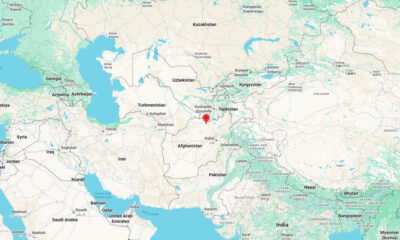Reviews
Global AI Slowdown Raises Stakes for Business Continuity and IT Operations

A recent global report indicates that corporate spending on artificial intelligence is showing signs of softening, signaling a potential shift in how enterprises invest in digital infrastructure. According to analysts at RBC Capital Markets and data from the Institute for Business Spending, the share of U.S. companies subscribing to AI services slipped from 44.5 % in August to 43.8 % in September — marking the first measurable downturn since the industry’s acceleration in 2023.
In this evolving landscape, IT operations and support teams must recalibrate. With tighter budgets, the imperative shifts from flashy pilot projects to foundational systems that ensure resilience, scalability and predictability. One such area that demands attention is IT infrastructure management — and in particular, how enterprises deploy remote monitoring software to support their operations, manage risk and integrate emerging enterprise AI tools into everyday workflows.
Why Operations Teams Are Under Pressure
When enterprises are rethinking AI spending, operational stability becomes a priority. IT teams can no longer rely solely on one-off AI experiments; instead, they must deliver continuous performance, cost predictability and uptime across distributed systems. The drop in AI investment emphasises that business leaders expect tangible ROI and fluency in usage, rather than procession of isolated prototypes.
In this environment, remote monitoring capabilities rise in importance. As companies scale globally, support operations span multiple geographies, devices and networks. Remote monitoring software offers visibility into endpoints, networks and service performance — allowing teams to detect anomalies, enforce SLAs and maintain continuity. When infused with enterprise AI tools, these systems do more than alert; they predict, prioritise and optimize interventions.
Enterprise AI Meets Remote Monitoring: A Synergetic Opportunity
Integrating AI into remote monitoring transforms IT operations from reactive to proactive. Rather than waiting for alerts, AI-powered platforms can analyse trending data, detect subtle degradation patterns and forecast issues before they translate into service impact. For example, AI models might examine endpoint performance logs to identify a server drive heading towards failure, or monitor service-desk tickets to isolate a recurring hardware issue linked to a particular vendor.
By layering enterprise AI onto a remote monitoring foundation, organisations gain several advantages:
- Predictive maintenance: AI algorithms forecast failures and schedule interventions during low-impact windows.
- Automated triage: Incoming alerts are categorized by severity, context and business impact, enabling faster routing and response.
- Unified dashboards with AI insights: Service teams get real-time status over global environments, with machine-generated recommendations.
- Data-driven optimisation: Analytics uncover recurring fault patterns and highlight opportunities for process improvement or vendor renegotiation.
This alignment of AI and monitoring is particularly relevant today — as enterprises reassess where their AI spends should land. By embedding AI into core infrastructure tooling, companies support operational resilience rather than chasing speculative gains.
A Practical Framework for Deployment
To get the most from remote monitoring coupled with AI, organisations should approach according to three phases:
1. Baseline and visibility
Start by deploying remote monitoring software across critical assets: servers, endpoints, network segments and service-desk systems. Monitor performance metrics such as latency, error rates, CPU usage and ticket volumes. The goal is to understand the normal operational patterns before layering advanced capabilities.
2. AI-enhanced detection and triage
Once baseline data is mature, introduce AI-based analytics. These tools use historical logs and ticket metadata to recognize anomalies and predict incidents. For example, a trove of remote-monitoring logs tied to a repeating spooler error might trigger an AI model to escalate automatically to a higher severity category, reducing manual triage overhead.
3. Predictive resolution and optimisation
In the final stage, the system recommends corrective action, schedules maintenance and automates routine interventions where safe. AI insights feed into business intelligence dashboards and support strategy meetings — highlighting vendor performance, resource allocation and lifecycle refreshes.
Throughout, management should monitor key metrics: mean time to detect (MTTD), mean time to repair (MTTR), ticket backlog age, and cycle time of routine maintenance tasks. Reporting should show how remote monitoring and AI integration reduce downtime and improve service consistency.
Mitigating Risk and Ensuring Responsible Use
While the combination of remote monitoring and AI is powerful, it also introduces new responsibilities. Enterprises must ensure data privacy, manage model performance drift, and guard against over-automation that disconnects human oversight. Organisations such as the National Institute of Standards and Technology (NIST) emphasise governance frameworks, transparency in AI decision-making and clarity around automation limits.
In a global operations context, compliance and security are paramount. Remote monitoring accesses critical infrastructure; monitoring AI models may process sensitive logs. Ensuring role-based access, encryption of data at rest and in transit, and regular audits of AI models are non-negotiables.
Capitalising on the Global AI Investment Pivot
The broader slowdown in enterprise AI budgets is not a sign of failure — it’s a signal to recalibrate. Organisations that pivot towards AI-embedded operational platforms are likely to gain better resilience and return on investment. The global economy is changing and businesses that shift from “what can AI do” to “what must our infrastructure do” will lead.
In this transition, remote monitoring software enriched with enterprise AI becomes a strategic asset. It supports business continuity, operational visibility and cost control — aligning IT operations with corporate priorities in uncertain times.
Final Thoughts
As the AI investment wave steadies and business leaders look for real, measurable impact, the infrastructure underpinning digital operations becomes ever more significant. Deploying intelligent remote monitoring software transforms IT management from reactive firefighting into proactive assurance.
By incorporating enterprise AI tools into the foundation of service delivery, companies strengthen their ability to respond, adapt and grow — even when global headwinds demand greater discipline in technology spending. In a world where digital resilience matters as much as innovation, this shift is more than tactical—it’s strategic.

-

 US News1 week ago
US News1 week agoJetBlue flight diverts to Tampa after altitude drop injures at least 15
-

 Breaking News2 days ago
Breaking News2 days agoAt least 3 dead, 11 injured after UPS cargo plane crashes near Louisville airport
-

 World4 days ago
World4 days agoStrong 6.3 earthquake strikes northern Afghanistan; felt across Pakistan
-

 World4 days ago
World4 days agoProtesters storm government building in Mexico after killing of local mayor
-

 World5 days ago
World5 days ago10 people stabbed on train in Huntingdon, England
-

 US News1 day ago
US News1 day ago5 firefighters injured in vehicle explosion in the Bronx, NYC
-

 US News1 week ago
US News1 week agoTrump says U.S. will resume nuclear weapons testing ‘on an equal basis’
-

 US News1 week ago
US News1 week agoDamage reported in Kilgore, Texas following tornado warning




